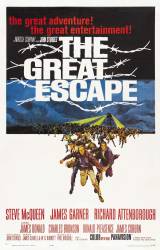
Factual error: Why is Hilts not wearing a uniform? A serving officer captured behind enemy lines in civilian clothing risked being shot as a spy. If a prisoner's uniform was too worn or damaged to wear, it was routine for the German authorities to replace it - a P.O.W. in civilian clothes is an obvious escape risk. He is wearing a pair of tan chinos, a cut off sloppy Joe sweatshirt, both ridiculously anachronistic - Sixties hipster fashions - and nowhere even close to a World War 2 uniform. He is also wearing Army Type III Service boots - something that would never have been issued to a fighter pilot.
Suggested correction: Hilts was a POW for a few years before being transferred to this camp. His current clothing likely changed from when he was originally captured in his uniform, so he would not have been considered a spy. After multiple escape attempts, his uniform could have been ruined. The Geneva Convention required that POWs receive shelter, food, clothing, medical care, etc. The Red Cross delivered care packages to POW camps containing food, miscellaneous apparel, and other essentials. Sweatshirts have existed since the 1920s and changed little. Also, chino pants have been around since the late 19th century. Hilts was an U.S. Air Force pilot, and light-colored khaki trousers (similar to chinos) were standard-issue uniform for some U.S. military branches, along with leather bomber jackets for Air Force pilots.
And none of them would have been available to a prisoner in a German POW camp in Poland in the mid 1940s. Not one single item of hipster fashion would have found its way into the camp. Even if it did, do you really think the German authorities would allow a prisoner to lounge about in civilian clothing? Talk about an escape risk.
The camp was in Germany, not Poland. Other than the sweatshirt, Hilts appears to wear military clothing - a leather bomber's jacket with military sleeve insignia, and U.S. Air Force khaki trousers. So not "hipster" '60s civilian clothing. The sweatshirt could be military appropriate (even issued) and something Hilts acquired at a different camp. He arrived with a small duffel bag that presumably had some misc clothing. He and two other POWs are the only Americans and have different uniforms. The current camp commandant, who apparently disdained Hitler and his Nazi minions, would decide what POWs could wear.
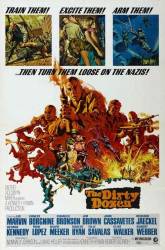
Factual error: During the war games they have Jefferson pose as a major in order to facilitate the commandeering of the ambulance and the jeep. Regardless of their personal feelings in the matter the ambulance crew and the driver and troops in the jeep would be perfectly aware that no black man would ever be promoted to a position of authority in an otherwise all white command. We may find it repugnant today but the US Army was rigidly segregated during World War 2 - and it stayed that way until 1948. Jefferson may have been inducted into a special unit like the Dirty Dozen but considering that the future of the entire mission is riding on their success at the games, throwing it all away like that makes no sense at all.
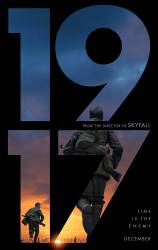
Factual error: The strong current of the river the main character falls into carries him to a considerable waterfall. There is not, nor has there ever been, a river of that kind in the Ecoust front line area, let alone a waterfall. Anyone who has any insight into the geography of the region will tell you it is flat as can be. The largest body of water, the Yzer, gently meanders and flows into the Channel, even during really rainy times.
Suggested correction: I do not believe that either Ecoust or Croisilles Wood is in Flanders. Both are behind the old German lines at the Somme. That said, there are no bodies of water in that area.
Ecoust and Croissilles are in department Pas-De-Calais in the French Flanders, together with the Belgian flanders they are called Flanders Fields. It is indeed a flat area.
Also, the message in ink delivered is legible, despite having been submerged in water. And don't get me started about the attack from ridiculous trenches and not a barbed wire in sight.
It's not. Even French Flanders is further north. But, even though there are some high points in the area, like Vimy Ridge that rises to about 500 feet above the surrounding plains, the slopes are quite gentle. And, as you say, wouldn't allow for the kind of drop seen in the movie.
There is a watercourse that goes through Croisilles... But it's basically a ditch.

Factual error: When the bombs are being taken down the lane, in the background where the lane meets the road a white mini can be seen passing the entrance.
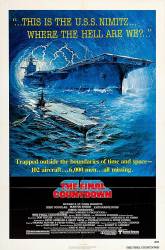
Factual error: Listening to a radio broadcast, live, since no other indication is given, Joe Louis is completing the 12th round of a fight. This is December 6, 1941. Joe's last fight of 1941 occurred in September, his next fight was January 1942. (00:00:10)
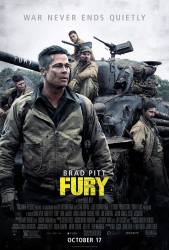
Factual error: During the final battle, Gordo the tank driver calls out, "Panzerfaust, four o'clock!", as he looks through his periscope. He could not have seen any targets at four o'clock, as the driver's periscope could barely rotate towards the eleven and one o'clock positions, close to the left and right front corners of the tank's hull. The four o'clock position would be near the right rear of the tank.

Factual error: Doug Masters and his friend Reggie would be grounded on the spot and have their pilot's licences suspended (and in all likelihood cancelled) after buzzing the motorcyclist. Their flying is grossly unsafe. They would be visible for miles flying well below a safe altitude, but even if they were not seen their radio traffic and radar tracking would tell the authorities everything they needed to know.
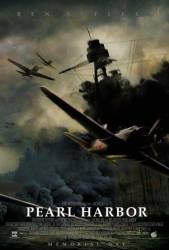
Factual error: In the scene where Admiral Kimmel is inspecting the crew of the battleship an aide comes up with a message to send some ships to the Atlantic. Admiral Kimmel starts complaining about the orders. No Admiral would ever do this especially in front of enlisted men. In fact he was placed in charge of the Pacific fleet when his predecessor complained about moving the fleet from San Diego to Pearl Harbor.
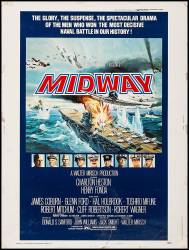
Factual error: In the final scene, where Fonda and Holbrook are looking over the carrier at the crowds on the dock, you can see that only the first rows of people are dressed in period clothes. The rest of the crowd are dressed as they would have been in 1976 when the film was made. Also, between them in the background is a yellow Ford Pinto.
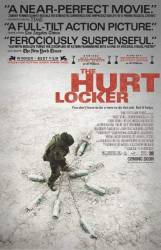
Factual error: In one scene they are playing on an Xbox 360, but the Xbox 360 did not come out until 2005, and the game being played, Gears of War, wasn't released until 2006. The movie takes place in 2004.
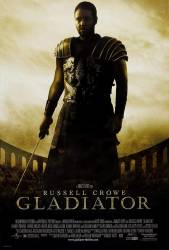
Factual error: When a group of soldiers goes to Maximus' villa to burn it and kill his family, his son points them, saying in Italian "Mamma! I soldati!" ("Mom, the soldiers!") and then "Papà!" ("Daddy!"). This is because the young actor (Giorgio Cantarini) is Italian and they didn't translate, for some reason. As a result, he's speaking Italian in a movie in English, where people are supposed to speak Latin, in a province where Italian was never ever spoken. (00:43:07)

Factual error: Miller rigs his booby trap by attaching the wires from the bomb to a pole down which a metal runner slides, so that when the runner touches the wires it completes the circuit and detonates the bomb. The trouble is, the pole is made of steel, and steel is very conductive indeed. Miller attaches the exposed end of the wire to the pole without any insulation or gap. The circuit will actually be completed when Miller attaches the battery, and he and his booby trap will be blown sky high.
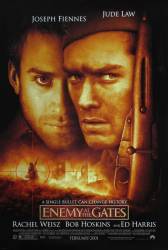
Factual error: When the map of the German advance is shown, Switzerland is shown to be taken over. Switzerland was never invaded by the Germans. (00:05:10)
Suggested correction: It doesn't show German advances. It shows the German influence over Europe, symbolizing it covers all of Europe and then expanded towards the East. Italy was never conquered by the Germans either yet it was part of the axis and is shown being covered by black. Switzerland, though neutral, was fully surrounded by the Axis and their influence played heavily upon the country. Its a very crude simulation.
Suggested correction: It does not show the German advancement in true historical order, but more like a red shadow that expands across Europe in a steady pace. And just as the camera starts zooming in on Stalingrad, you can see a small sliver of red starting to spread on the south-eastern coast of Norway.
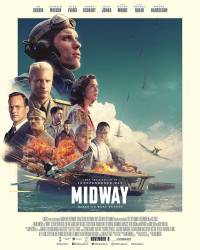
Factual error: During the battle at the Marshalls-Gilberts, the movie shows mountainous terrain. The real Marshalls and Gilberts are atolls with very little terrain.

Factual error: During the plane ride into France, the Paratroopers are holding/carrying their weapons by their sides. In reality, their weapons (M1 Garands, B.A.R.s, etc.) would be carried in special "bags" strapped to their parachute harness. This not only protected their weapons, but also secured them to their person.
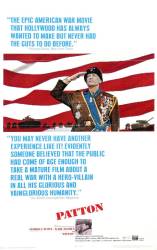
Factual error: When Patton orders his driver to drive to the Carthaginian battlefield he addresses him as "sergeant". He is, however, wearing corporal's chevrons. A famous stickler for discipline and ceremonial, Patton is not likely to have made a mistake like this.
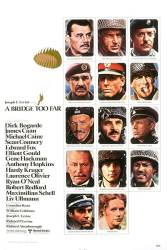
Factual error: Most of the parachutes are PX type. These came out in the 1960s. They only used X type during the war - only a few of those are seen in the film. (00:07:00)
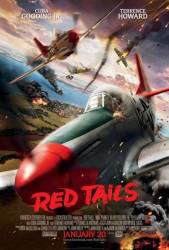
Factual error: The German fighters depicted in the film are Messerchmitt Bf 109 G-6s, and every single one of them is using the Rüstsatz VI gun pod, that is, 2 extra 20mm Mg 151 cannons. The Luftwaffe only equipped their Bf 109s with the gun pods when they were going to intercept bombers. In this movie, even on the fighter vs fighter missions, they have these gun pods, which is inaccurate, because the gun pods dramatically reduced the turning performance of the Bf 109s.
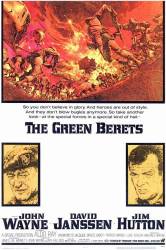
Factual error: The final scene of the movie has Col. Kirby and the little Vietnamese boy supposedly on the beach at Da Nang, Vietnam. Kirby is saying, "The future of 'nam is you, kid", and the camera pans out to the sea and the sun is going down. The sun's sinking in the east...
Suggested correction: Nowhere in the film are we told where in Vietnam the Green Beret base is, just that it is in South Vietnam (of course). South Vietnam has a Western coast, along the Gulf of Thailand, along which anyone can watch the sun set over the sea.
Around the 18:00 - 18:30 mark a character welcomes John Wayne to Da Nang. This base is returned to throughout the film, including the infamous sun setting in the east scene. Da Nang's beaches face to the Northeast. Only when you get south of Nha Trang does the Vietnamese coast begin to offer a south to southwest horizon on the ocean.
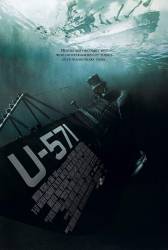
Factual error: In the last battle scene when you see shots of the German destroyer through the periscope the last one shot before it's blown up is really bad angling. The ship is far away but in the scope it's very close and the periscope (in order to get that camera angle) is 100 ft in the air.